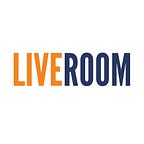We know that a business analyst’s involvement in a project generally begins with the kick-off of a meeting. From there, an idea needs to be taken about the client’s mind and about the business problem in order to provide the required solution. For that, as business analysts, one should have a sound knowledge of what the client wants.
Requirement elicitation is the process of researching, uncovering and acquiring the requirements of the customers and other stakeholders.
For a requirement elicitation session to be successful, one should start by asking the right questions.
There are many methods to elicitate requirements such as interviews, observations, questionnaires, brainstorming sessions, requirements workshops, etc. Selecting the proper elicitation techniques according to the characteristics of the project is very important. Per my belief, this is the most crucial process of gaining knowledge about the clients’ requirements or needs.
To prepare for the elicitation process, first, we have to get an accurate understanding of clients’ business needs thereby we can organize necessary steps for the process. As the next step, we have to choose a method to elicit requirements with the understanding we get from the above process.
Following are some of the elicitation techniques we can use,
- Interview- This is the method of understanding clients knowledge and thinking through a face to face conversation. This can be used in writing a strong requirement specification since interviews can lead to collect a large amount of data in a short period of time and collect rich and detailed data. But the result depends on the interviewer’s skills and questions that are prepared before the interview.
- Brainstorming- Brainstorming is the technique of eliciting a number of innovative ideas from a group of people which have not been thoroughly considered by them. This technique provides an environment to take in a tremendous amount of information instantly which will let us figure out a solution to reach out to the business goal. This can generate a number of new ideas in a short period of time helping to get exceptional ideas and solutions to the problem.
- Prototyping- Most of the times people cannot get a better idea of a system till they try it by themselves. In a situation like this, we can use prototyping, a newer procedure of requirement gathering which we can define as a mock-up or a storyboard. This gives a better visual representation of the product which can be repeated until the customer is satisfied with the application. Once the business requirement has been identified, we can start creating the interactive prototype which will meet client requirement and business needs.
- Document Analysis- Document analysis is a common elicitation method which we use in requirement gathering. This includes gathering and reviewing all the documents that exist regarding the business objective to understand the business need. The documents may include all the documents related to the project which include contracts, business plan, statement of work, etc.
- Survey/ Questionnaire- These are much more ideal, informal and inexpensive ways of gathering requirements that can be used to collect data from a large number of people. They provide the opportunity to gather requirements in a standardized way and help to get a detailed inspection of the business need when the issue is clear enough.
In some cases, these techniques cannot be pinpointed as an independent activity. For example, brainstorming can take place as a part of an interview and in some cases, we have to do a survey to get an idea about the project so we can create a prototype. Like this as business analysts, in some cases, we have to combine a few elicitation techniques or choose the best technique to gather requirements from the client. The company structure, aspects of the client and our traits have a significant impact in choosing the elicitation technique.
On behalf of team LiveRoom, written by @Chamini Rajapaksha
